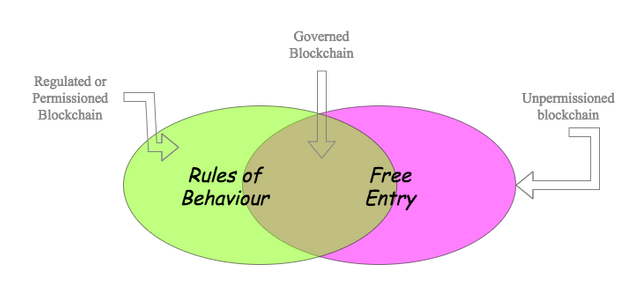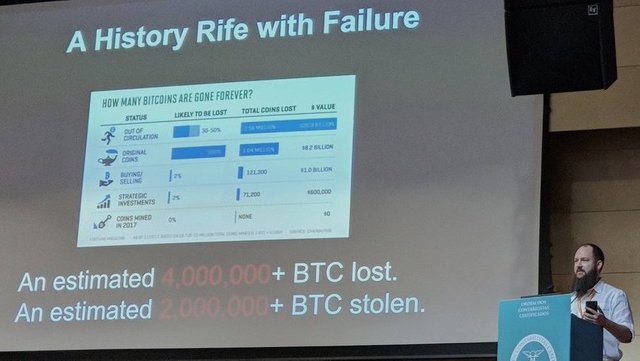译文/Translated:
EOS和整个区块链首例,EOS第一个争议裁决要求把钱归还给受害者。
裁决声明
根据争议解决条例第六条规定赋予我的权力,我,本·盖茨,裁决要求争议的EOS账户应该即刻归还索赔人,同时解除对该账户的冻结。
简单来说,这个案子中受害者说他的ERC20-EOS密钥被“钓鱼”了,而“钓鱼者”到EOS社区提取宝贵的EOS代币。受害者是在六月进行的投诉,EOS代币当时被冻结了。现在,在4个月之后,案件被听证并最终得到裁决——受害人获得了他的EOS。
这是受管理的区块链的一大成就。我们在EOS社区中花了18个月才把这个变成现实。争议解决和EOS宪法是我们在一开始就都同意的用来解决其它区块链遇到的The DAO困境和其它猖獗的罪行。

当然了,当初细节敲定也遇到了诸多困难。大家都有不同的观点。当初我们在各种想法和细节上争论不休,现在也依然在争论中。这个项目依然饱受争议——很多人依然认为,这预示着区块链迈向终结。但是还有人觉得,社区想要改进区块链的不良用户记录,这一步自然而然是要走的——这反而预示着我们已经迈了出去。但本案发生在社区宪法生效之前,所以案子显得非常棘手,也因此才觉得每个步骤都要谨慎为之,才能建立公平和合理的裁决。
谁才是对的?我们只能去尝试和了解。但是有些事情还是得先说清楚。
除非争议解决能够获得更好的安全保证,否则这个机制就过分了。Block.one虽然在想办法提高安全性,但是好的代码总是需要花很多时间的。这件事的重要行在于争议解决仅限于处理我们不能预测的事情上,如果我们可以预测到这些毛病,我们肯定就会马上解决这个问题了。

而且,我们是可以预测钓鱼活动的——从2005年开始就可以,具体可参考当年我发布的图表。我们可以预测未来会有密钥盗窃,虽然我也不知道第一起是什么时候发生的。我们可以预测被黑客攻击——我第一次被攻击是在1981年,所以如果你没听过,那就只能说你的思想闭塞、记忆丢失或者需要回炉改造一下。如果你不能预测会有密钥丢失,那就把钥匙给你奶奶让她帮你保管吧。
Jamison Lopp认为,因为上述威胁,整整600万比特币已经丢失了。我们需要更强的安全保护,这样普通人才能保护他们最普通的财产——这种案子不应该交给争议解决来处理,而是应该让它成为普通用户日常、一般、甚至是枯燥的工作的一部分。

Luka说我们现在都得管理好自己的币,这可能就是大规模应用带来的成本了。但是,从过去一个世纪信息安全的历史中我们可以得出一个很重要的结论,这其实也是Kerchhoffs和他的六个原则里面说的:
业已知道的事情成为了现实,我们解决就是了。
安全性的第一个目标就是解决我们已经知道的问题,这就是Block.one在做的事。
剩下的、未知的、无法预测的,这些才是我们还没掌握的。我们中的大多数不能预测宪法实际上会怎么在区块生产者手中解决问题——所以我们暂且只能先看一两个案例。我们中的大多数没有预测如果有些交易本身就是犯罪的一部分那该怎么办——所以要小心。我们中的大多数不知道一场有争议的公投最终会演化成怎样,所以我们会密切关注之前的任何一场公投寻找线索。搞以太坊的大多数人跟不知道The DAO事件会发展成什么样,比特币社区的人也不知道BCH的未来会怎么样,不知道Lightning会走向何方,更不知道其它很多项目会如何。
我们已经预测到的是:有些敌人因为这样那样的原因在追击区块生产者。这就是我们选择这条路的一部分的原因:BP不做决定,如果它们真的做了,那它们就可能要面临仲裁和被投票出局的命运。所以他们有了更简单的答案——提请裁决。这就会让事情变得很简单。当然也可能变得很难。但这起作用的而实给BP一定程度上的自述和法律保护机会,而这是他们在区块链世界的其它地方找不到的。
我不是说这就是最好的方法——我的意思是,这是我们早期在设计EOS建筑时害怕的事情。如果在伊朗或者莫斯科或者华盛顿特区或者沙特阿拉伯的BP出了什么事,那接下来会如何?
另外一个我没有预料的事情是受管理的区块链居然会引起这么大的争议。支持和反对的呼声都非常激烈,但它们都没有触及到受管理的区块链的核心概念:如果区块链让不良用户肆意妄为,它自己就有害了。如果受管理的区块链能够管制不良用户,那他们也有选择权。要么去其它链,我们也知道其它链是哪里;-) ;-),要么就要控制好自己的行为。
真要说最近的新闻有什么新鲜事的话,那就是这个做法在其它区块链带来下滑的趋势。因此,EOS是一个大实验。我们在升级游戏,我们的行为基于几个原则:不损害自由进入,不屈从外在世界,不损害核心观点——公平的人做公平的交易。
这值得我们好好守护。标
原文/Original:
In what is a first for EOS and blockchain, the first ruling returning funds to a victim has landed.
Ruling
Under the powers afforded to me as arbitrator under Article 6 of the Rules of Dispute Resolution, I, Ben Gates, rule that the EOS account in dispute should be returned to the claimant with immediate effect and that the freeze over the assets within said account is removed.
The short details of the case are that a victim was phished of his ERC20-EOS key, and the phisher went into EOS to claim the valuable EOS tokens. The victim complained in June and the EOS tokens were frozen. Now, some 4 months later, the case has been heard and ruled on – the victim gets his EOS back.
This is quite an achievement for the governed blockchain. We in the EOS community have worked for over 18 months to make this a reality. Dispute Resolution and the Constitution as a way to resolve the dilemmas of The DAO and rampant crime in other blockchains was something that we all agreed on in the very first days.

Of course the details were hard fought over. Many had their different views. We fought over vision and details then and we fight now. The project remains highly controversial – there are still many who think this is the beginning of the end for blockchain. Yet others who think this is a natural first step to improving blockchain’s atrocious user record – it’s the end of the beginning! This case indeed was quite tricky because it started before the Constitution was in place, so the steps in the ruling had to be laid out carefully to establish fair and reasonable jurisdiction.
Who’s right? We can only try and find out. A few things have to be said though.
Dispute resolution is hopelessly overwhelmed unless bolstered by better security. Block.one is working on better security, but good code takes time. The reason this is critical is that dispute resolution is only there to catch the stuff that we can’t predict. If we can predict it we should fix it.

And, we can predict phishing – since 2005 as the diagram I posted in that year testifies. We can predict key theft, although I don’t know when the first case happened. We can predict hacking – I first got caught hacking in 1981 so if you haven’t heard about it, your mind is closed, lost, for reclamation. If you can’t predict key loss, hand your keys to your grandma to protect.
Jamison Lopp suggest that fully 6 million Bitcoins have been lost to these threats. We need much stronger security, so ordinary people can protect their ordinary fortunes – We need to move the bulk of the cases out of Dispute Resolution and into the routine, the mundane, the boring hands of users.

Luka says we now all have to babysit our coins, and that may be the cost of mass adoption. But one thing we know from a century of information security going back to Kerchhoffs and his 6 principles is this:
What we know is happening, we fix.
The first goal of security is to fix what we know, and this is what block.one are working on.
What is left, what is the unknowables, what is unpredictable, is the stuff we haven’t got a grasp on. Most of us didn’t predict how the Constitution would actually handle in the grasp of the block producers – so we expect a case or two there. Most of us didn’t predict how to deal with exchanges that are part of the theft cycle – so watch for that. Most of us have no clue how a fork from a contested referendum will evolve, so any prior forks are watched for clues. Most of those in Ethereum had no clue how The DAO would pan out, most of those in Bitcoin can’t see where the BCH drama is going, nor the Lightning drama, nor many others.
Things we DID predict are enemies chasing the Block Producers for some cause or other. That’s in some part why we chose this path: the BPs do notmake these decisions and if they do, they risk being arbitrated against andvoted out. So they have a simple answer – go file a dispute. This might make it easy. Or it make make it hard. What it does do is give the BP a level of narrative and legal protection they just cannot get anywhere else in the blockchain world.
I’m not saying this is the best way – I’m saying this is what we were terrified of in the early days of design of the EOS architecture. If a BP in Iran or Moscow or Washington DC or Saudi Arabia got into trouble, what then?
Another thing I did not predict – that the concept of the governed blockchain would be so fought over. The arguments and criticisms have been fierce. But they have not in any way scratched the central concept of the governed blockchain: if a blockchain lets the bad actors run amok, then it will become toxic. If a governed blockchain governs the bad actors then they have a choice. Go elsewhere, and we all know where that is 😉 😉 or behave.
And, if anything recent news has it that the acting is on a downwards slope in other blockchains! Thus, EOS is quite an experiment. We are lifting the game, and we’re doing it without compromising on free entry, without bowing to the outside world and without weakening the essential idea – fair actors can do fair deals.
That’s gotta be worth some babysitting.
原文链接/Original URL: